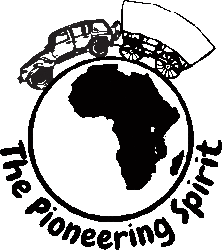Rwanda would be the second smallest county we would visit in Africa, but with a population of over 11 million it would be the highest population density with over 1000 persons per square mile. With very little tourist infrastructure for overlanders, we had a serious conversation about whether we should go to Rwanda and if we did what would our route be. Camping opportunities are few and far between, especially for us with a vehicle towing a trailer and lots of people everywhere. If our only reason for going to this small country was to see a genocide memorial, was this the right reason to go? In the end, our decision to go was based on showing our support to survivors of the Rwandan Genocide by being tourists in their country. After leaving Uganda and beginning the process of entering Rwanda we experienced a first. We had to have our temperature taken before being allowed to drive through the gate to access any governmental buildings for immigration and customs. We are unclear if it is always like this, or if the recent outbreak of Ebola in the Democratic Republic of the Congo, a neighboring country, was the reason, either way, we passed on through with proper temperatures and were allowed to continue the process of entering the country, which was quite smooth. Some of the first things we noticed about Rwanda was the amount of people and bicycles and the lack of cars on very well maintained roads. The other was the lack of litter, which I later learned was due to mandatory service days of its population where everyone is required to participate in cleaning up and beautifying their community. Our time in Rwanda was to be short, as we had already spent most of our 90 day East Africa Visa time in Kenya and Uganda. Our main goal for visiting Rwanda was to visit the Genocide Memorial in Kigali, the capital of Rwanda. In 1994, an estimated 1 million Tutsis and moderate Hutus died in the span of 100 days, where friends and families turned on each other and the world watched, governments chose to turn a blind eye and horrific things happened. This memorial is presented very well, with past history given to help understand how a population got to such a horrible spot, and current education ongoing in hopes that the country’s history does not repeat itself. If you ever find yourself in Rwanda, this Genocide Memorial should not be missed. Though it does make for a painful and somber day, it is important as a participant in the human race to be educated about how things like this happen and to encourage those that are moving forward. There are many books about this topic as well as a movie, Hotel Rwanda.
Our drive from the memorial to our next camp was quite a somber one, but the camp was a women’s cooperative and seemed like a good place to see how its population is moving forward and celebrating life. At this Women’s Cooperative campsite, we found ourselves meeting up with Blanca, whom we had met in Nairobi. She is riding her bicycle from Europe to South Africa and is a true inspiration. You can check out her travels on her Facebook page here. It was such a pleasure to cross paths with her again.

In total, we spent 3 nights and 4 days in Rwanda. I took one photo, which in hindsight is a true tragedy, but in the moment was the furthest thing from our minds. This country is beautiful with its rolling hills, covered in a farming patchwork for as far as the eye can see with people walking everywhere.

